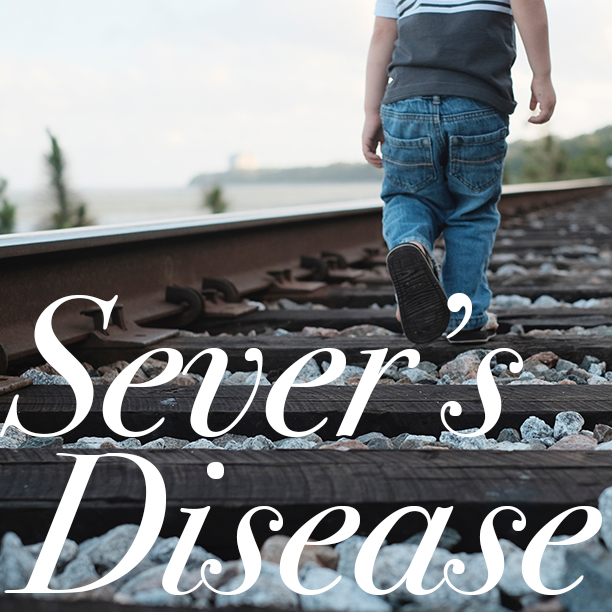Although the name might send a fearful chill down a parent’s spine, Sever’s disease is actually a fairly common heel injury that occurs in children ages 7 to 15, with the majority of patients presenting between 10 and 14 years of age.

Sever’s disease, also known as calcaneal apophysitis, is the most common cause of heel pain in growing athletes and may be due to overuse and repetitive micro-trauma of growth plates of the heel. The condition occurs at the back of the heel (also known as the apophysis or the insertion of the Achilles tendon) and, in some cases, might also be felt on the bottom of the heel.
As a child goes through puberty, the growth of the heel bones is slower than that of the ligaments of the leg. It is during these growth spurts that the Achilles tendon, which connects the calf muscle to the heel, can fall behind the heel in terms of development due to its slower rate of growth. As a result, muscles and tendons can become very tight and overstretched.
The heel is especially susceptible to injury since the foot is one of the first parts of the body to grow to full size and the heel area is not very flexible. The back of the heel hardens and becomes stronger when it finishes growing, which is why Sever’s disease rarely occurs in older adolescents.
It is more common to see this condition appear during the school year as symptoms usually begin after a child begins a new sport or sporting season, and can worsen with athletic activities that involve running and jumping.
Sever’s disease is also more common in boys as they tend to have later growth spurts.
Sever’s Disease Symptoms
– Pain, swelling or redness in one of both heels
– A visible limp or difficulty walking
– Discomfort or stiffness in the feet in the morning
These symptoms are usually worse during or after activity and get better with rest. The good news is that the condition doesn’t cause any long-term foot problems and typically goes away after a few months.
The primary method for treating Sever’s disease involves taking time off from sports and other physical activities to alleviate the pressure on the heel bone. It is also recommended that those suffering from the condition also avoid going barefoot and wear shoes with a soft cushioning heel rise in order to reduce the pull from the calf muscles on the growth plate and increases the shock absorption.
In some cases, a doctor might also prescribe anti-inflammatory drugs, such as ibuprofen or naproxen to relieve the pain. In severe cases, a short-term cast (2-3 weeks) may be needed to ensure that the area is getting the proper amount of rest.
Contact and Follow
Follow Dr. Goldbaum on Twitter @Delray_Podiatry
The content on this website is for informational purposes only. Do not rely or act upon information from www.DelrayBeachPodiatry.com without seeking professional medical advice. If you live in South Florida and would like a consultation with Dr. Ian Goldbaum, a podiatric physician and surgeon with over 30 years of experience, please see our contact information below:
DELRAY BEACH
16244 S. Military Trail #290, Delray Beach, FL 33484
561-499-0033
BOCA RATON
2900 N. Military Trail #210, Boca Raton, FL 33431 (SOUTH BLDG)
561-499-2683
BOYNTON BEACH
8198 Jog Road #100, Boynton Beach, FL 33472
561-736-4002

One response
path of exile orbs
You are the savior of my life.